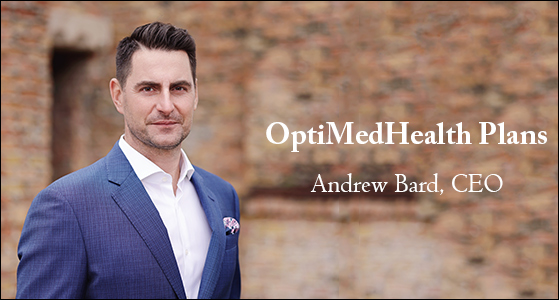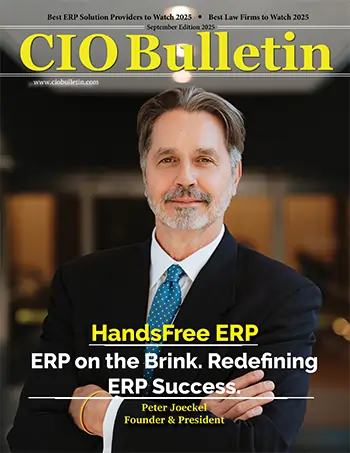10 Best Inspiring Leaders of the Year 2023
CIO Bulletin

When we consider the value of health insurance, we frequently imagine the worst-case scenario. Insurance is unquestionably essential in the event of a serious illness or injury. A three-day hospital stay can cost $30,000, and fixing a fractured leg can cost $7,500. For more severe conditions like cancer, the cost of care can easily reach hundreds of thousands of dollars.
According to the American Hospital Association (AHA), the percentage of Americans who have health insurance has increased significantly over the past five years, reaching over 90% now. Access to care is made easier by health insurance, and these factors are linked to decreased mortality, enhanced health, and increased productivity. About half of all Americans who have insurance do so through their work or that of their spouse. It makes good business sense for firms to provide insurance benefits to their employees and their families for a variety of reasons.
When there are so many flashy, new wellness perks on the rise in the market, it might be easy to miss more ubiquitous advantages like employee medical insurance. Employer-provided health insurance has developed into a fundamental standard benefit for many firms.
Companies have come to understand that one of their most valuable assets and a key factor in their success is their workforce. Additionally, businesses should anticipate insuring this asset just like they would any other asset. Employer health insurance is a suitable choice for businesses in this regard because of the development of the internet, the surge in the smartphone market, and the advent of digital-first, self-service insurers.
It can be rather comforting to have a significant amount of medical expenses covered by an employer's benefits program. After all, it's not hyperbole to suggest that, excluding the extremely wealthy, a person without health insurance may be literally just one serious illness or injury away from financial collapse. Despite recent progress, according to the AHA, more than 28 million people still do not have access to coverage, endangering their bodily, mental, and financial well-being.
Therefore, there is no question that businesses that include health insurance as a part of their benefits package for employees attract more qualified candidates than those that do not. It would be difficult to discover a better health insurance company than OptiMedHealth Plans for employers and individuals looking for a trustworthy insurance partner.
Full-service employee benefits provider OptiMedHealth offers partner, self-funded, and fully insured packages. They have improved their customer service expertise over the past 50 years to offer the best coverage and quick access to the appropriate solutions.
The variety of health insurance products offered by OptiMedHealth provides innovative answers that support brokers and employers in navigating the complex and rapidly evolving healthcare market.
Serving diligently for over 50 years — the story of OptiMedHealth Plans
OptiMedHealth Plans was established as a full-service employee benefits company in 1968. For over five decades, OptiMed has provided self-funded and fully insured products. In 2000, the brand expanded into a full-service TPA.
Beginning in 2021, the portfolio was expanded into the individual health insurance market, providing a variety of plan options to help brokers and employers navigate the challenges involved with the ever-changing healthcare market.
With its self-service platform, OptiMedHealth Plans' objective is to assist brokers and employers in selecting the best coverage for their workforce and their company. The business offers clients the best-fit solutions while serving as a one-stop shop for managing the nuances of health plan structure, pricing, and product design.
The whole range of employee health benefits is managed by OptiMedHealth, from the purchase of a health plan to its administration and upkeep. The business adopts a whole-customer ownership philosophy and focuses on providing a digital experience via its platform throughout the course of each client relationship. Brokers can swiftly and effectively offer companies rates in real time thanks to the OptiMed platform. Brokers are freed from the burden of manually gathering all the information and relaying it to employers thanks to this digital approach. Employers can now make important judgments in minutes rather than days. Every client OptiMedHealth works with receives white-glove care.
The company's strongest initiative is to give customers a quick, safe way to get special products along with efficient application, billing, and enrollment processes.
Customers will consistently feel secure and protected from unforeseen life events thanks to their "first-class" products and member services.
OptiMed wants to make sure that both its brokers and the members they represent can easily access the goods, services, and technology. HR Tech Outlook recognized OptiMedHealth as the Top Employee Benefits Solution Provider in 2022.
Understanding the difference provided by OptiMedHealth
OptiMedHealth offers sustainability through their incredible service:
Additionally, OptiMedHealth creates exclusivity through innovation:
Flexible and robust — OptiMedHealth’s Services
GAP Group Supplemental
High-deductible health plans can leave employees with unforeseen medical expenses, and OptiMedHealth is aware of this. GAP extra insurance may be useful.
Employers can find the ideal balance of healthcare premiums and coverage thanks to GAP coverage's customizability.
When compared to major medical plans with higher deductibles, GAP coverage results in total savings for both businesses and employees. Depending on their option, the employer contribution for GAP might range from 0% to 100%. To ensure that customers don't have to wait long for their money, OptiMed handles all claims quickly.
Employers searching for a health plan to go with GAP are advised to combine OptiMed's Level Funded Major Medical Plan, according to the staff at OptiMedHealth. With this combination, companies can provide each employee with a single insurance card and health plan administrator.
Major Medical
Consultants have the freedom to adapt to the various needs of their clients thanks to the OptiMed Level Funded Major Medical Program.
Deductibles range from $500 to $8,150 in the Level Funded Health Plans offered by the company. Plans offer copays, coinsurance, and alternatives that are HSA-compatible. Both aggregate and specific claims are covered by excess loss (stop-loss) reinsurance under each plan. All plans have a monthly accommodation so that a claim made early in the year won’t cause the employer’s cash flow to suffer.
The Level Funded Plans from OptiMed offer complete medical protection with the potential for an end-of-year reimbursement based on a successful claims history. The employer receives a refund for each dollar set aside for claims that is not used throughout the plan year. The cash can subsequently be used tax-free by the company for employee benefits like renewals. That is a full return of the surplus in the claims fund.
Limited Medical and Minimum Essential Coverage (MEC)
Minimum Essential Coverage (MEC):
With OptiMed's Medical and MEC plans, clients can cover any additional medical costs that their employees, including part-time workers, incur.
The self-funded OptiMed Minimum Essential Coverage (MEC) program is sponsored by the employer. The MEC complies with the Affordable Care Act's (ACA) requirement that businesses with 50 or more full-time equivalent employees provide preventive medical services.
Limited Medical:
Employers can offer employees and their families’ basic insurance protection through OptiMedHealth's Limited Medical Plans, which pay set amounts for particular treatments. They provide alluring benefit packages that lower medical costs in the most prevalent places.
Additionally, OptiMedHealth Plans offers Vision, Dental, Voluntary Term Life, Long Term Disability, Critical Illness, Health Spending Accounts, Accident Expense, Short Term Medical, Telemedicine, Prescription Drug and Administrative Services.

An Innovative technology strategy
OptiMedHealth’s technological platform is built on a cloud-based architecture. This allows the company’s products to access the robust Google Cloud Platform. The company offers its technological platform to employers as SaaS applications.
OptiMedHealth’s technology platform promotes business continuity through a combination of core technologies such as Office 365, SharePoint, a dynamic 365 CRM, and WLT/VBA.
OptiMedHealth offers custom-built proprietary solutions, such as its OptiRater, to clients as well. The company also provides employers with access to a portal where they can manage their health insurance broker and manage employee enrollment into their group health insurance plans.
Providing employers, employees, and individuals with flexible and detailed health insurance plans
Andrew Bard came on board as CEO of OptiMedHealth Plans in 2021. With over 18 years of experience in the industry, Andrew helps carriers, brokers, and distribution partners around the globe thrive in the ever-evolving health insurance industry. Since becoming CEO at OptiMed, Andrew has grown not only the group insurance branch of the company but has also developed a new branch within the brand for individual insurance products.
Andrew continues to express how passionate he is about the insurance industry and the growth of the OptiMed brand, saying, “It’s exciting to be a part of a company that truly cares for the members we support. The service we provide is unmatched in the industry, and this is something we take pride in. Our internal team is consistently working to further streamline processes for brokers and members alike through advanced technology, excellent customer service, and a wide range of products. The future is bright for OptiMed, and we look forward to continuing to service communities all over the country.”
Prior to leading the OptiMed team, Andrew was President of Tokio Marine HCC’s Medical Insurance Group. He worked with over 8,000 distribution partners in 79 countries and led the transformation from a small, family-owned general underwriter to one of the largest providers of international medical insurance.







